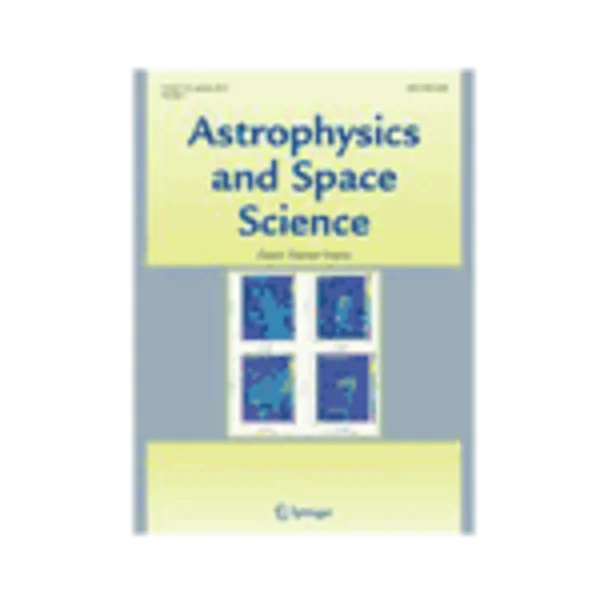-
surface brightness fluctuations as primary and secondary distance indicators
جزئیات بیشتر مقاله- تاریخ ارائه: 1392/07/24
- تاریخ انتشار در تی پی بین: 1392/07/24
- تعداد بازدید: 976
- تعداد پرسش و پاسخ ها: 0
- شماره تماس دبیرخانه رویداد: -
the surface brightness fluctuations (sbf) method measures the variance in a galaxy’s light distribution arising from fluctuations in the numbers and luminosities of individual stars per resolution element. once calibrated for stellar population effects, sbfmeasurements with hst provide distances to early-type galaxies with unrivaled precision. optical sbf data from hst for the virgo and fornax clusters give the relative distances of these nearby fiducial clusters with 2% precision and constrain their internal structures. observations in hand will allow us to tie the coma cluster, the standard of comparison for distant cluster studies, into the same precise relative distance scale. the sbf method can be calibrated in an absolute sense either empirically from cepheids or theoretically from stellar population models. the agreement between the model and empirical zero points has improved dramatically, providing an independent confirmation of the cepheid distance scale. sbf is still brighter in the near-ir, and an ongoing program to calibrate the method for the f110w and f160w passbands of the wide field camera 3 ir channel will enable accurate distance derivation whenever a large early-type galaxy or bulge is observed in these passbands at distances reaching well out into the hubble flow.
مقالات جدیدترین رویدادها
-
استفاده از تحلیل اهمیت-عملکرد در ارائه الگوی مدیریت خلاقیت سازمانی و ارائه راهکار جهت بهبود
-
بررسی تاثیر ارزش وجوه نقد مازاد بر ساختار سرمایه شرکت های پذیرفته شده در بورس اوراق بهادار تهران
-
بررسی تأثیر سطح افشای ریسک بر قرارداد بدهی شرکت های پذیرفته شده در بورس اوراق بهادار تهران
-
بررسی تأثیر رتبه بندی اعتباری مبتنی بر مدل امتیاز بازار نوظهور بر نقد شوندگی سهام با تأکید بر خصوصی سازی شرکت ها
-
تأثیر آمیخته بازاریابی پوشاک ایرانی بر تصویر ذهنی مشتری پوشاک ایرانی (هاکوپیان)
-
تاثیر یک دوره تمرینات پیلاتس بر توانایی فضایی و حافظه کاری زنان سالمند
-
بررسی تاثیر حالت های مختلف قرارگیری آرماتورهای برشی مورب در عملکرد تیرهای بتنی hsc
-
نقش بازاریابی آنلاین بر جذب گردشگر در آژانس های مسافرتی شهر ساری
-
تأثیر سیالات گرمابی در شکل گیری بنتونیت های ناحیه خور و بیابانک (استان اصفهان)
-
gadolinium loaded nanoparticles in theranostic magnetic resonance imaging
مقالات جدیدترین ژورنال ها
-
مدیریت و بررسی افسردگی دانش آموزان دختر مقطع متوسطه دوم در دروان کرونا در شهرستان دزفول
-
مدیریت و بررسی خرد سیاسی در اندیشه ی فردوسی در ادب ایران
-
واکاوی و مدیریت توصیفی قلمدان(جاکلیدی)ضریح در موزه آستان قدس رضوی
-
بررسی تاثیر خلاقیت، دانش و انگیزه کارکنان بر پیشنهادات نوآورانه کارکنان ( مورد مطالعه: هتل های 3 و 4 ستاره استان کرمان)
-
بررسی تاثیر کیفیت سیستم های اطلاعاتی بر تصمیم گیری موفق در شرکتهای تولیدی استان اصفهان (مورد مطالعه: مدیران شرکتهای تولیدی استان اصفهان)
-
بررسی دورنمای فراگیرسازی آموزش و پرورش در ایجاد احساس کارآمدی کودکان با نارسایی ویژه
-
بررسی کفویت در نکاح از دیدگاه حقوق موضوعه ایران
-
واکاوی دیدگاه اخباری ها در مسأله حجیت ظواهر آیات قرآن کریم
-
اثربخشی امید درمانی بر راهبردهای مقابله با استرس و اضطراب کرونا در زنان مبتلا به سرطان پستان در دوران اپیدمی کووید-19
-
(clear-cut, easy and safe air purifying technique (poyrazmatic




سوال خود را در مورد این مقاله مطرح نمایید :